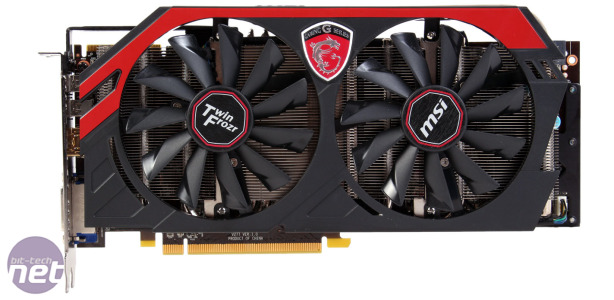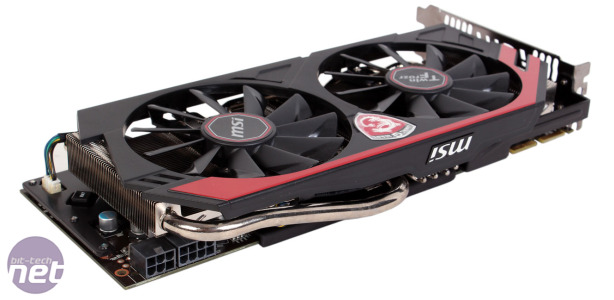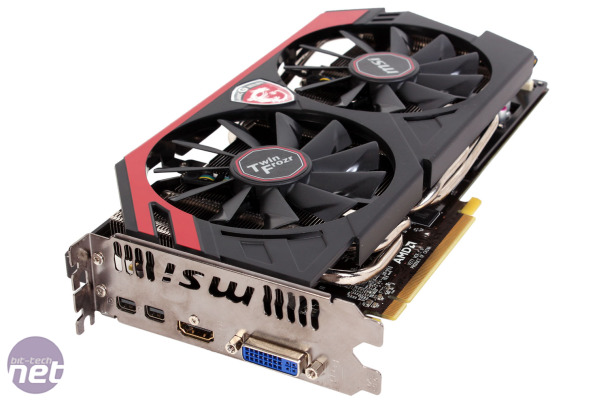Performance Analysis
Given that the MSI R9 280X is essentially the same card as an HD 7970 GHz Edition, it's no surprise to see performance all round that is very similar. In Battlefield 3, at 1080p, its minimum frame rate is slightly trumped by the GTX 680 while the GTX 770 has a solid lead. However, at 2,560 x 1,600, the kind of resolution that AMD claims is the card's forte, it catches right back up to the GTX 770 with a minimum frame rate of 43fps. At 5,760 x 1,080 it falls behind again, albeit with a slightly better average rate.We noted in our original R9 280X review that the latest AMD cards do very well in BioShock Infinite, and MSI's version continues this trend, actually beating the GTX 770 at 1080p and basically matching it at 2,560 x 1,600. It's also much better across three screens, but still unplayable at the high settings we use. The GTX 680, meanwhile, is trumped every time.
In Crysis 3 at 1080p the MSI doesn't do so well, with a result on par with the other Tahiti cards that puts it behind even the GTX 670's minimum frame rate. However, at higher resolutions, it's able to reclaim some ground, outpacing the GTX 680 in both cases. It also fares very well in Skyrim, trumping the costlier GTX 770 in single screen tests and matching it once we stretch the game across three monitors. Our Unigine Valley benchmark places the GTX 770 a whopping 17 percent ahead of the MSI card, and the GTX 680 is ahead too, although our other tests suggest the real world difference is a bit less than this.
There are precisely zero surprises when it comes to power consumption, and the card consumes basically the same amount as an HD 7970 GHz Edition card. Generally, this result can be considered a little high and inefficient, as it's on par with the much faster GTX Titan. While we don't have a stock model of the R9 280X 3GB to compare the MSI card to, relative to the oh-so-similar reference HD 7970 GHz Edition card it runs a little cooler. The pair of large fans were always quiet in testing too, rarely reaching anything about 25 percent speed.
Our overclocking efforts were well rewarded in Battlefield 3, where the MSI card pulls ahead of the more expensive GTX 770 2GB by 4fps (10 percent) at 2,560 x 1,600, although the GTX 780 naturally remains far out of its league. In Unigine, meanwhile, it closes the gap on the GTX 770 to just 6 percent, but is unable to overtake it. We also noticed the cooler handling the overclocks very well, with temperatures only rising by a few degrees and fans only peaking at 27 percent of their maximum speed.
Conclusion
A key thing to take away from this review is that although it's getting on for two years old now, the Tahiti GPU still has plenty to give (and perhaps a lot more in the future thanks to Mantle), as it still copes well even in demanding games at 2,560 x 1,600. Prices are quite varied for it at the moment, whether it's in the form of an HD 7970 or an R9 280X, but the vast majority are significantly cheaper than the GTX 770, and though it doesn't decisively outperform this card, it's frequently ahead or at least nipping at its heels.When it comes to MSI's card specifically, it's in decent standings. The overclock is admittedly marginal, but there's a decent amount of extra headroom for more, especially on the memory chips, indeed it's something of a shame MSI hasn't overclocked the memory by default. Although a little larger than some, the cooler is well built and runs cool and quiet, even when the card is overclocked and under load. It's perhaps not the very best deal at the moment in this price bracket right now (for starters, Never Settle details are yet to be confirmed), but it still looks set to be a decent choice.

-
Performance36 / 40
-
Features27 / 30
-
Value26 / 30


MSI MPG Velox 100R Chassis Review
October 14 2021 | 15:04












Want to comment? Please log in.